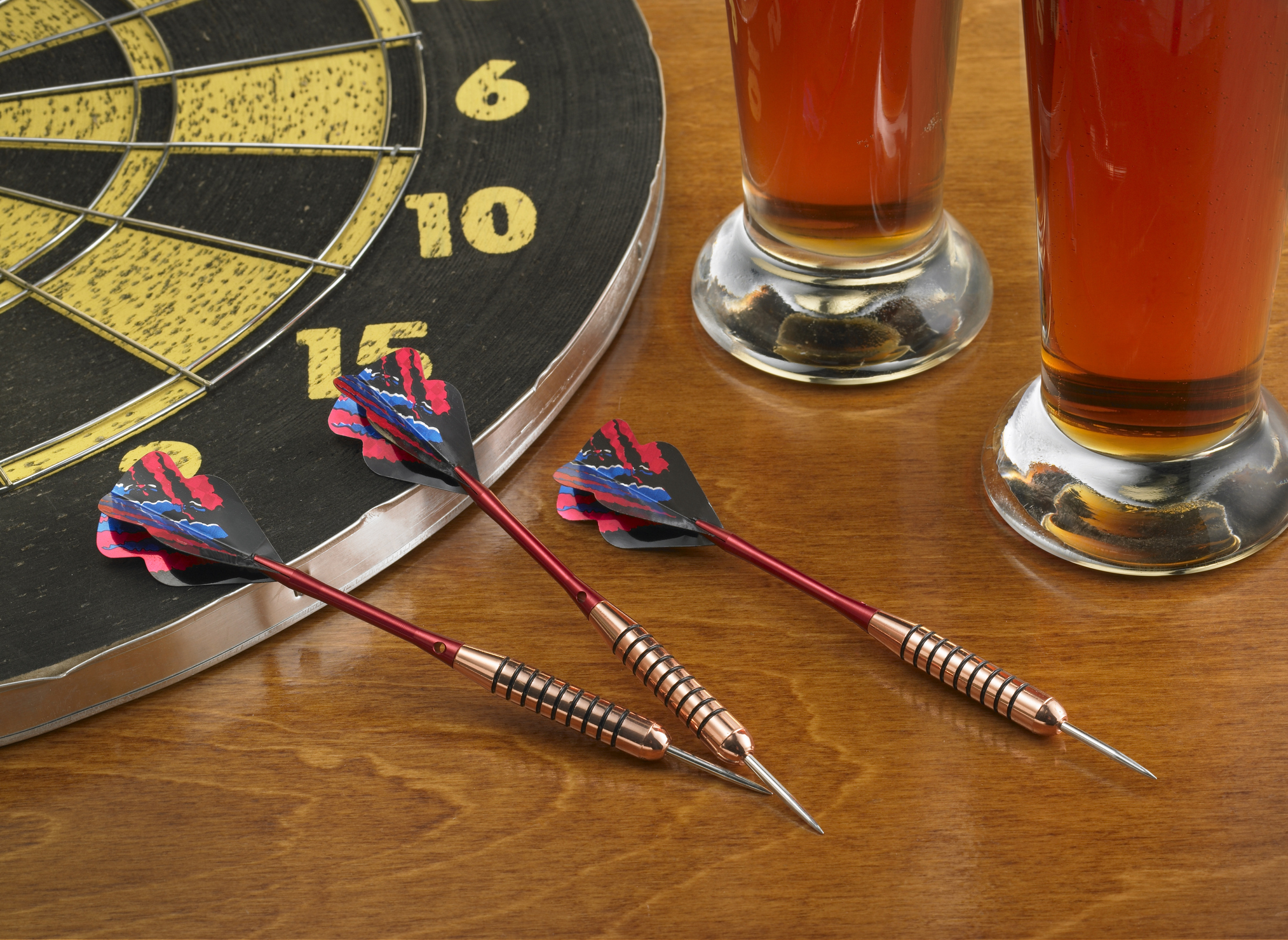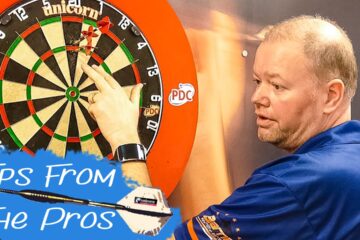To calculate your darts average, simply add up the total number of darts thrown and divide by the number of darts. In darts, the average score per three darts is used to measure a player’s skill level and consistency.
When playing darts, calculating your average can help track improvement and compare performance to other players. Whether you are a beginner or a seasoned player, understanding your average score can provide valuable insights into your darts game. By following a few simple steps, you can easily compute your darts average and utilize this valuable metric to enhance your skills on the dartboard.
Let’s delve into the process of calculating your darts average and how this figure can be beneficial in evaluating and refining your darts technique.

Credit: kpa.io
Understanding Darts Averages
Darts averages are a crucial measure of a player’s performance, reflecting their consistency and skill level during a game. Understanding how to calculate and interpret darts averages can provide valuable insights into your performance and help you track your progress over time. In this guide, we will explore the importance of darts averages in the game and the different types of averages in darts.
Importance Of Darts Averages In The Game
Darts averages serve as a key indicator of a player’s skill and consistency. It is a reflection of their ability to hit the desired targets consistently over a series of throws. A higher average indicates better accuracy and skill, while a lower average may suggest areas for improvement. By tracking your darts average, you can set performance goals, identify strengths and weaknesses, and monitor your progress over time to become a more effective darts player.
Different Types Of Averages In Darts
In darts, there are various types of averages that provide unique insights into a player’s performance:
- Three-Dart Average: This is the most common type of darts average and is calculated by dividing the total number of points scored by the total number of darts thrown in a game. It is a reliable measure of a player’s scoring ability and consistency.
- First-Nine-Dart Average: This average specifically focuses on the first nine darts thrown by a player in a game. It provides an indication of a player’s performance right from the start and is often used to assess their initial scoring ability.
- Checkout Average: The checkout average is calculated by dividing the total number of points scored in finishing a leg (checkouts) by the number of opportunities a player has had to finish a leg. This average reflects a player’s ability to complete a game and is a crucial measure of their darts proficiency.
Understanding these different types of averages can provide valuable insights into your strengths and weaknesses as a darts player, allowing you to focus on areas that require improvement and enhance your overall performance.
Basic Calculation Methods
Calculating your darts average can give you valuable insights into your performance and progress as a player. Here are the basic calculation methods to help you determine your darts average.
Simple Formula For Calculating Darts Average
To calculate your darts average, you can use the simple formula:
Points scored ÷ Number of darts thrown = Darts average
This formula provides a straightforward way to determine your average score per dart thrown and helps you track improvements in your game over time. For example, if you’ve scored a total of 180 points with 60 darts thrown, your darts average would be 3.
Using Number Of Darts Thrown And Total Points Scored
Another method for calculating your darts average is by using the number of darts thrown and the total points scored. This method allows for a more comprehensive understanding of your performance by considering both the frequency of your throws and the accumulated score.
- Record the total number of darts thrown during a game or practice session.
- Calculate the total points scored using those darts.
- Divide the total points scored by the number of darts thrown to obtain your darts average.
Factoring In Game Variations
When calculating your darts average, it’s important to factor in the different game variations and scoring systems that you may encounter. By understanding how to adjust your averages for different game formats and considering variations in scoring systems, you can accurately assess your performance across various playing conditions.
Adjusting Averages For Different Game Formats
Darts averages can vary across different game formats such as 501, 301, Cricket, or others. When calculating your average, it’s essential to take into account the specific rules and requirements of each game format.
For example, in the game of 301, you start with a lower score and may have fewer opportunities to score, which can impact your average compared to a game of 501. It’s crucial to adjust your average based on the specific format you are playing to accurately reflect your skill level in that particular game.
Considering Variations In Scoring Systems
Different venues and leagues may employ variations in the scoring system, such as double in/double out or different scoring zones on the dartboard. These variations can significantly impact your scoring and overall average.
For instance, playing in a league that requires double in and double out may result in lower average scores compared to a standard game. Understanding and factoring in these variations in scoring systems is essential for accurately assessing your performance in different playing environments and conditions.
Advanced Techniques For Accuracy
Analyzing Player’s Performance In Different Legs
When calculating a player’s darts average, it’s essential to analyze their performance in different legs. Each leg represents an opportunity for the player to showcase their skills, and the analysis of each leg can provide valuable insights into their consistency and accuracy.
By breaking down the player’s performance into individual legs, you can identify the areas where they excel and the areas where they may need to improve. This level of analysis goes beyond simply calculating an overall average and allows for targeted strategies to enhance performance.
Incorporating Weighted Averages For More Accurate Results
Incorporating weighted averages can lead to more accurate and insightful results when calculating a player’s darts average. Weighted averages take into account the importance of each dart thrown, giving greater significance to darts thrown in pivotal moments or under pressure.
By assigning weights to different darts based on their significance, players and coaches can gain a deeper understanding of performance trends and areas for improvement. This advanced technique provides a more nuanced perspective on a player’s accuracy and consistency, offering valuable data for strategic adjustments.
Leveraging Technology For Calculations
The game of darts has entered the digital age, allowing players to utilize technology to efficiently calculate their darts average. Leveraging technology for calculations not only simplifies the process but also provides accurate and detailed insights into a player’s performance, enabling them to track progress and identify areas for improvement.
Utilizing Online Darts Average Calculators
Online darts average calculators have revolutionized the way players measure and analyze their performance. These user-friendly tools eliminate the need for manual calculations, allowing players to input their scores effortlessly and receive instant average calculations.
By leveraging this technology, players can focus more on their game without the hassle of tedious calculations, ultimately enhancing the overall playing experience.
Understanding The Benefits of Technology in Tracking Averages
The integration of technology in tracking darts averages offers numerous benefits, including real-time data analysis, trend identification, and historical performance tracking. This allows players to gain valuable insights into their playing patterns, strengths, and areas requiring improvement.
Moreover, technology enables players to maintain accurate records of their performance, facilitating goal setting and informed decision-making. It empowers players to monitor their progress and make necessary adjustments to elevate their game.
Wrapping Up
Calculating your darts average is a simple yet essential tool for gauging your progress in the game. By using the right formula and logging your scores, you can gain valuable insights into your performance and identify areas for improvement. So, keep practicing, tracking, and refining your skills to reach your darts goals.
FAQs
How Can I Calculate My Darts Average?
To calculate your darts average, add the total number of darts thrown and divide by the number of completed games. This will give you an accurate average score over time.
Why Is The Darts Average Important?
Your darts average helps you track your progress, assess your skill level, and identify areas for improvement in your game. It provides valuable insights into your performance over multiple games.
What Is A Good Darts Average?
A good darts average varies depending on skill level, but generally, an average over 60 points per turn is considered impressive. As you continue to improve, aim for a consistent average above this benchmark.



